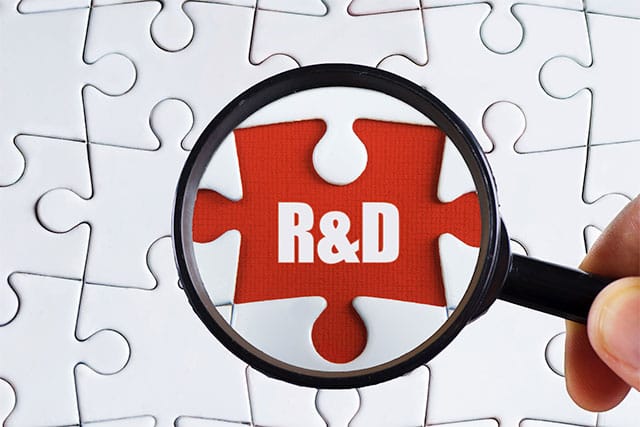
As I’ve covered in previous blog posts, most eligible UK businesses don’t claim R&D tax credits. That leaves them losing out on potentially tens of thousands of pounds.
That’s no exaggeration, either. The average SME R&D tax relief claim is in the region of £60,000!
A big part of businesses missing out is that the term ‘R&D’ sounds incredibly scientific, and a lot of companies simply don’t know or understand the criteria for claiming.
This post is designed to further de-mystify that and help you add some much-needed funds to your coffers. It covers the pre-qualifying criteria for R&D tax credits claims, along with examples of the kinds of businesses and projects that are and aren’t eligible.
How much must you spend on R&D to make a tax credits claim?

This is always one of the first few questions I get asked about R&D claims. How much do you need to spend in order to save? Thankfully, R&D tax credits don’t work that way.
In general, there is no set pre-qualifying R&D expenditure criteria for tax credits claims. Instead, the criteria revolves around the following:
∙ Your claim must centre on something identified internally as a ‘project’
∙ The project must aim to improve the application of science or technology – e.g. production or manufacturing processes, bespoke software, product development or similar
∙ And it must involve an element of technical innovation
What if your business is not profitable?
Your company doesn’t have to be profitable to claim research and development tax credits. In fact, unprofitable SMEs get a higher tax relief rate of 33% compared to 26% for profitable ones.
Non-profitable companies make that money back by surrendering losses (worth up to three times their year’s National Insurance Contributions and PAYE payments) to HMRC in exchange for a tax credit of 14.5%.
The net result is that if you meet the pre-qualifying criteria for R&D tax credits, it’s almost always beneficial to make a claim – even more so if you aren’t in profit for the financial year.
Three examples of R&D tax credit claims
These are three different examples of the kinds of companies and projects that might make an R&D tax credits claim – two successfully, and one unsuccessfully.
Successful claim 1: Food company
The first case study meeting the pre-qualifying criteria for R&D tax credits involves a food manufacturer seeking to produce a vegan meat alternative that’s closer than anything else on the market to the authentic texture and taste of real meat.
To complete the project, the company had to make significant scientific advances in order to synthesise a food with the right consistency, moisture and flavour – often with much trial and error along the way. The uncertain nature of the outcome, together with the high level of technical expertise required, marks this out easily as a successful R&D claim.
Successful claim 2: Construction company

Company two is also successful, albeit in a very different field.
This company runs construction sites but notices that the firms it partners with on projects, as well as the many sub-contractors employed by them, all struggle to know what each other is doing, or to report faults in materials being used on the site. This slows down construction efforts incredibly, causing expense as well as political friction between the different corporate entities at play and their employees.
The company therefore commissions their technology team to develop a mobile solution that can solve these many problems. The answer involves development of brand-new app software which can work on existing phones, along with proprietary wearable technology.
The field of construction may not seem like one where much R&D happens, but in fact the combination of technological innovation here in both hardware (the wearables) and software (the app), and the way they solve the problem at hand, make this another solid example of a project that hits the pre-qualifying criteria for R&D tax credits.
Unsuccessful claim: Hardware company
This unsuccessful case study involves a company that sells DIY hardware to wholesalers and retailers.
The company made a claim based on a project in which it sourced cheaper, more hard-wearing materials from one supplier and found a manufacturer who could commit to producing products with the cheaper materials in a shorter timeframe.In this instance, the project involves more advanced materials and more efficient manufacturing techniques. So, it is technically advancing the business’s purposes. But crucially, the company involved is simply a middleman using pre-existing products. The project has no element of technical discovery or innovation about it, and they are not investing in any form of research and development. It therefore does not meet the pre-qualifying criteria for R&D tax credits.
Does your project qualify for an R and D tax credits claim?
If you’re not sure, please get in touch. I have a wealth of experience in helping businesses of all kinds to understand if they meet the pre-qualifying criteria for R&D tax credits, and in helping those that do to make successful R and D tax credit claims.
